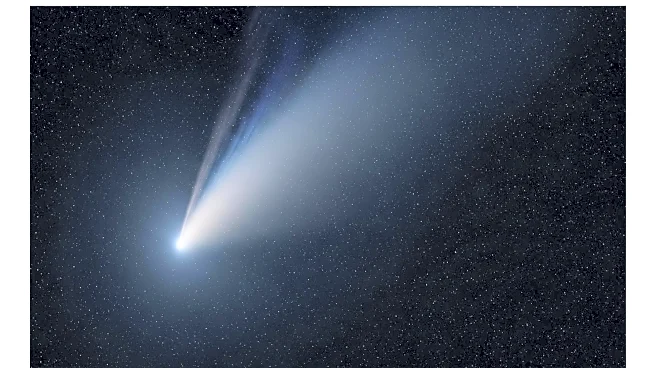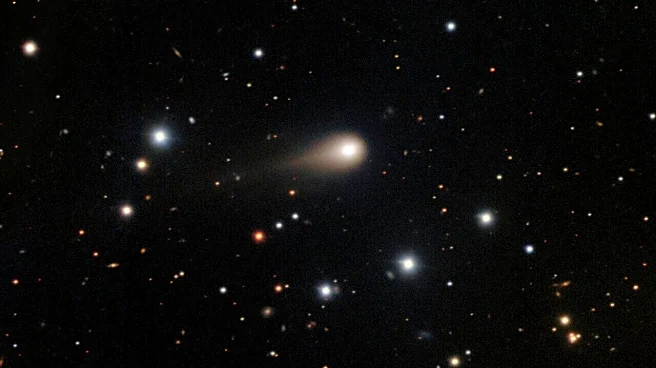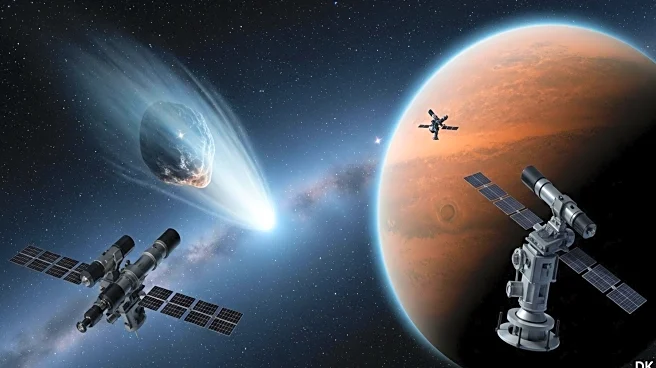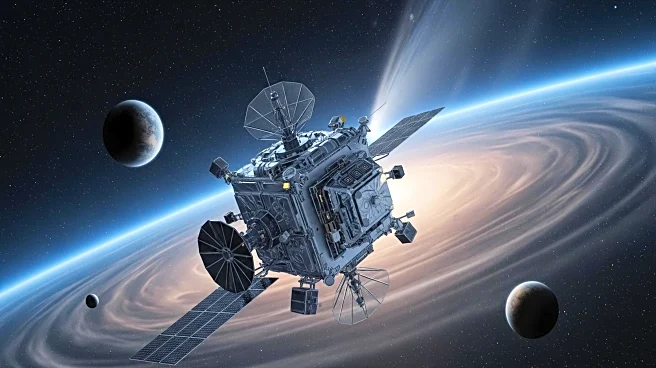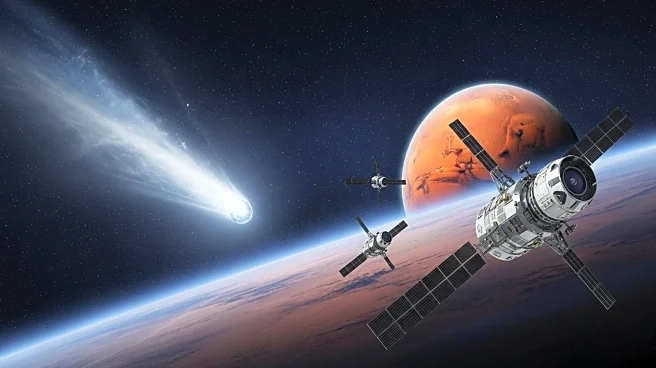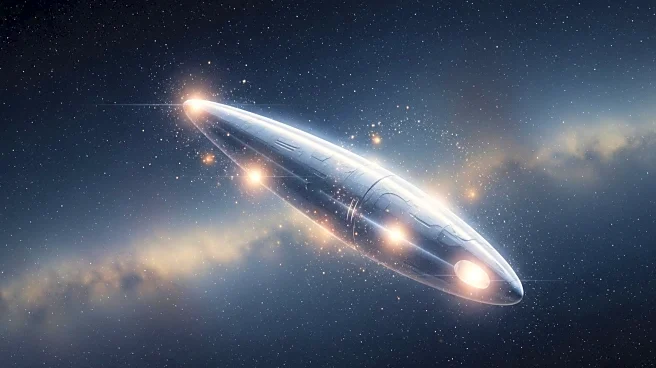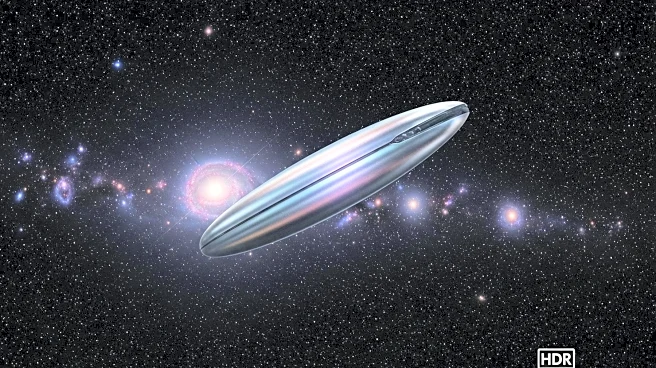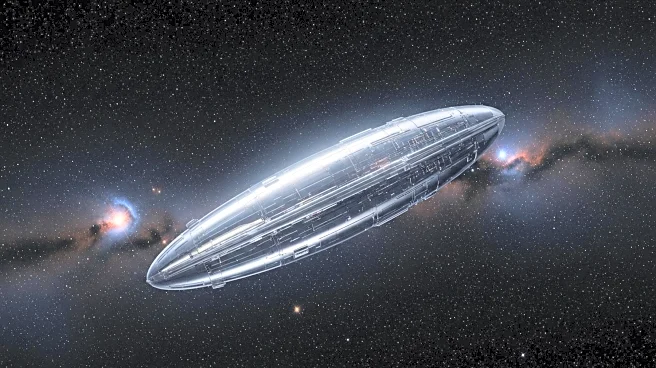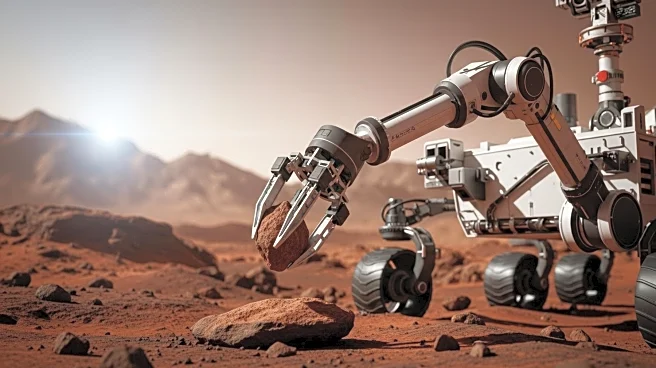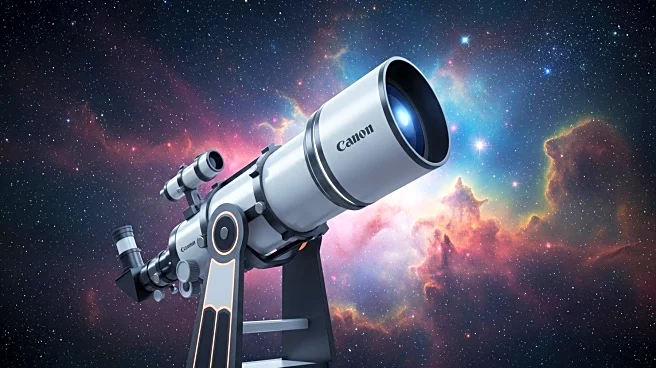What's Happening?
NASA's Hubble Space Telescope has captured images of the interstellar comet 3I/ATLAS as it approaches Mars. The comet, originating from another star system, is traveling at a remarkable speed of 193,000 mph (310,000 kph) and will pass within 18 million miles (29 million kilometers) of Mars. This event marks the comet's closest approach to the red planet during its journey through the inner solar system. The European Space Agency's satellites around Mars, along with NASA's satellite and rovers, are actively observing the comet. Discovered in July, 3I/ATLAS is only the third interstellar object known to have passed through our solar system. The comet poses no threat to Earth or its neighboring planets and will come closest to the sun at the end of October.
Why It's Important?
The observation of comet 3I/ATLAS is significant as it provides scientists with a rare opportunity to study an interstellar object. Such objects can offer insights into the composition and behavior of celestial bodies from outside our solar system, potentially enhancing our understanding of the universe. The involvement of multiple space agencies, including NASA and the European Space Agency, underscores the collaborative efforts in space exploration and research. This event also highlights the capabilities of current space technology in tracking and studying fast-moving objects, which is crucial for future space missions and planetary defense strategies.
What's Next?
Following its closest approach to Mars, comet 3I/ATLAS will continue its journey through the solar system, coming closest to the sun at the end of October. Throughout November, the European Space Agency's Juice spacecraft, en route to Jupiter, will monitor the comet. The comet will make its closest approach to Earth in December, passing within 167 million miles (269 million kilometers). These observations will continue to provide valuable data for scientists studying interstellar objects and their trajectories.
Beyond the Headlines
The study of interstellar objects like comet 3I/ATLAS may have long-term implications for understanding the origins and evolution of the solar system. By analyzing the composition and trajectory of such comets, scientists can gain insights into the materials and conditions present in other star systems. This knowledge could inform theories about the formation of planets and the potential for life beyond Earth. Additionally, the event highlights the importance of international cooperation in space exploration, as multiple agencies work together to maximize scientific returns.

